Erstellt am: 5. 12. 2013 - 22:57 Uhr
Nelson Mandela - the life of an icon
So writes former US president Bill Clinton in the introduction to the 2013 edition of Mandela’s autobiography “Long Walk to Freedom”.
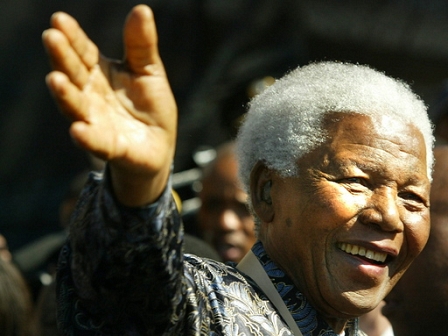
EPA/KIM LUDBROOK
Born in 1918 in a rural village, Nelson Mandela became South Africa’s first black president in 1994, the year that saw the end of apartheid and the transition to multi-racial democracy. He is admired around the world as a symbol of resistance to injustice for the way he opposed his country's apartheid system, as a revolutionary who became a peacemaker, and for his capacity to forgive, in spite of the harsh treatment he suffered. His story is one of struggle and hardship, courage and resistance, tolerance and forgiveness.
To understand Nelson Mandela's greatness, one has to understand apartheid – the system of racial segregation and white minority rule in South Africa under the National Party, which came to power 1948. Racial segregation (between African, coloured, Indian and white) had already been underway at the beginning of the 20th century and the National Party soon started introducing apartheid laws.
Marriage between whites and people of other races was prohibited. Sex between blacks and whites was forbidden. The law classified every South African according to their particular racial group and this determined where they were allowed to live and how they could be employed. Towns and cities were divided into different areas for different races. “Townships” like Soweto were built for non-white racial groups to keep them away from white residential areas. There was an education programme for Africans designed to discipline them and train them to do unskilled jobs. Black and white people were forced by law to use separate public facilities like parks, beaches, buses and public toilets. Such facilities were meant to be of the same standard, but rarely were. Apartheid created an unequal society in which most non-whites lived lives of poverty and hardship.
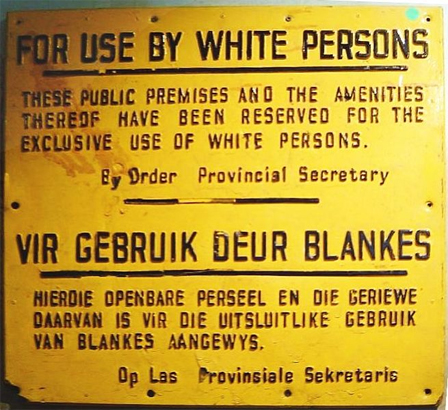
public domain
Sentenced to life in prison in 1963
From the outset there was resistance to the apartheid system and in the beginning it was moderate. In 1944 the Youth League of the African National Congress was formed, with Nelson Mandela - then 26 - as one of its founding members. The League proposed a militant programme of action based on mass protests, boycotts and passive resistance. The programme was adopted by the ANC in 1949, and the Youth Leaguers began to play a prominent role. In the early 1950s the ANC launched a campaign of civil disobedience and mass rallies, to which the authorities responded with mass arrests, heavy fines and jail sentences. The government started clamping down on activists, effectively silencing them, and passed laws to make it easier to declare a state of emergency.
The Sharpeville Massacre in 1960, in which police fired on a crowd of demonstrators, killing 69 people, was one of the catalysts that led to a shift from non-violent resistance to armed struggle. The ANC set up a military wing called Umkhonto we Sizwe, the “The Spear of the Nation”, also known as the MK. It was prepared to use violence to overthrow the government and in the early 1960s it carried out dozens of acts of sabotage. In 1963, the headquarters of the MK was raided and the entire leadership arrested and charged with plotting a violent revolution. Eight men were found guilty and sentenced to life in prison. One of them was Nelson Mandela.
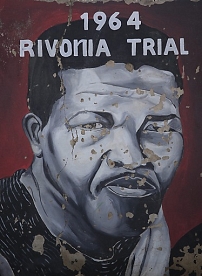
EPA/KIM LUDBROOK
During the trial Mandela made a four-hour address to the court, which ended with these famous lines: “During my lifetime I have dedicated my life to this struggle of the African people. I have fought against white domination and I have fought against black domination. I have cherished the idea of a democratic and free society in which all persons live together in harmony, and with equal opportunities. It is an idea which I hope to live for and achieve. But, if needs be, it is an ideal for which I am prepared to die”.
27 years in prison
Nelson Mandela spent 27 years of his life in prison, subjected to physical and emotional abuse. For 18 of those years he was incarcerated in the notorious Robben Island prison where, as a black political prisoner, he received the lowest level of treatment from prison workers. In 1980, the ANC led by the exiled Oliver Tambo, with whom Mandela had opened a law practice in 1952, launched an international campaign against apartheid focussed on one cause and one person - the demand to release Mandela. In 1988 on 11th June, Mandela’s 70th birthday, the “Free Nelson Mandela” concert was staged at Wembley Stadium in London, to a global audience of 600 million in 67 different countries.

EPA PHOTO/EPA/SCOTT APPLEWHITE/AO
The first international sanctions against South Africa had been imposed in the 1960s and in the 1980s they were tightened. The apartheid regime was also subjected to sports boycotts: South Africa was, for example, suspended from FIFA in 1963 and expelled from the International Olympic Committee in 1970. There were other campaigns to create pressure on the apartheid regime, like a boycott in Britain of Barclays Bank because of its involvement in South Africa. The pressure started producing results. In 1985, South African President P.W.Botha offered Mandela's release in exchange for renouncing armed struggle but Mandela rejected the offer. With increasing local and international pressure for his release, the government participated in several talks with Mandela over the years, but no deal was made. It wasn't until Botha suffered a stroke and was replaced by Frederik Willem de Klerk that Mandela's release became reality.
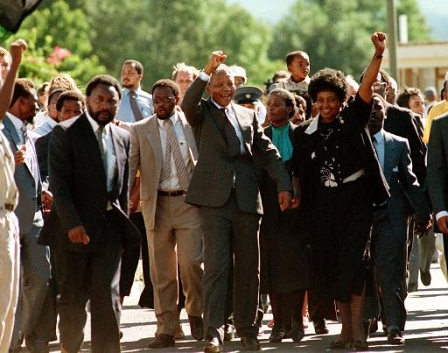
EPA PHOTO/FP/ALEXANDER JOE
Nobel Peace Prize in 1993
On 11th February 1990 a dignified and determined Nelson Mandela walked out of prison in Cape Town, a free man for the first time in 27 years. When he arrived at the City Hall a crowd of 50,000 supporters had assembled. From the balcony he spoke his first words in public for over a quarter century. "Our struggle has reached a decisive moment. Our march to freedom is irreversible." But from the outset Mandela's tone was also one of reconciliation: “I greet you all in the name of peace, democracy and freedom for all”.
Whereas many at the time may have feared a backlash of hate and recrimination, Mandela worked to bring about the transition from minority rule and apartheid to black majority rule and reconciliation. In 1993 the Nobel Peace Prize was awarded jointly to Nelson Mandela and Frederik Willem de Klerk "for their work for the peaceful termination of the apartheid regime, and for laying the foundations for a new democratic South Africa". On 27th April 1994 South Africa’s first multi-racial elections were held. The African National Congress won 62% of the votes. As the leader of the ANC, Nelson Mandela was inaugurated as the country's first black president on 10th May 1994. The National Party’s F.W. de Klerk was his first deputy and Thabo Mbeki the second in a government of national unity.
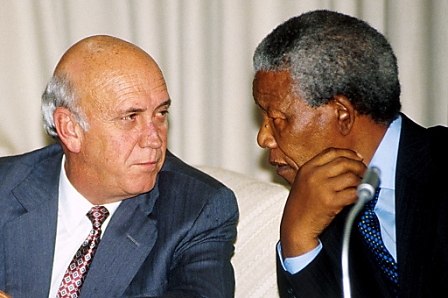
EPA/STR
The necessity for forgiveness
Mandela may be most famous for his capacity for forgiveness, but he also understood, pragmatically speaking, the necessity for forgiveness. Peter Fabricius, Foreign Editor at Independent Newspapers in South Africa says “having seen Mandela at close quarters, and having written about him a lot over the years, I think that there was also an enormous discipline and an understanding that forgiveness was the only way to a peaceful settlement of the conflict in South Africa. Mandela realised, not only with his heart but also with his head, that if transition was to succeed, the white population would have to be brought along.”
The 2013 edition of Mandela’s autobiography “Long Walk to Freedom” is prefaced with an introduction by Bill Clinton, who was president of the United States when Mandela was freed. He recounts how he once asked Mandela whether, when he was leaving prison after 27 years he didn’t “hate them all over again?” And Mandela replied: “Absolutely I did, because they’d imprisoned me for so long. I was abused. I didn’t get to see my children grow up. I lost my marriage and the best years of my life. I was angry. And I was afraid, because I had not been free in so long. But as I got closer to the car that would take me away, I realised that when I went through that gate, if I still hated them they would still have me. I wanted to be free. And so I let it go.”
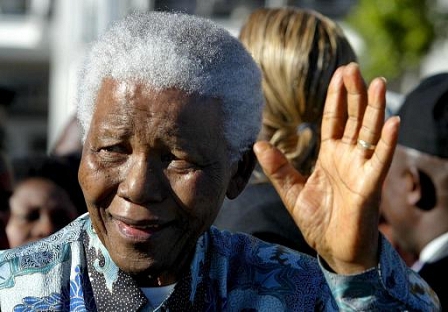
EPA/NIC BOTHMA
Nelson Mandela died on Thursday at the age of 95.


